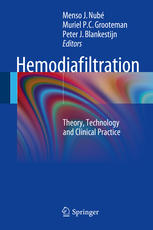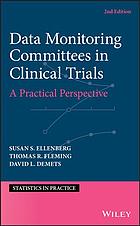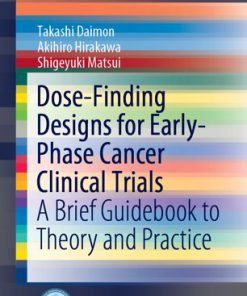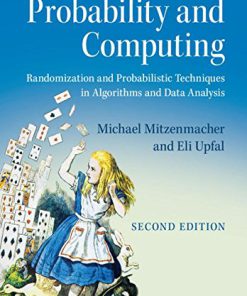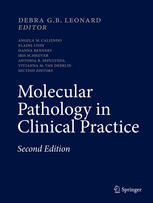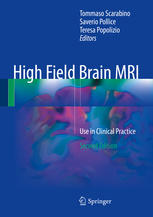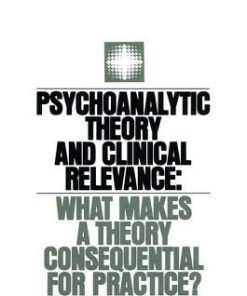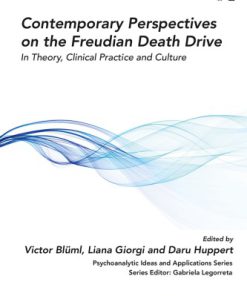Randomization in clinical trials theory and practice 2nd Edition by John Lachin,William Rosenberger 9781118742242 1118742249
$50.00 Original price was: $50.00.$25.00Current price is: $25.00.
Randomization in clinical trials theory and practice 2nd Edition by John Lachin,William Rosenberger – Ebook PDF Instant Download/Delivery:9781118742242,1118742249
Full download Randomization in clinical trials theory and practice 2nd Edition after payment
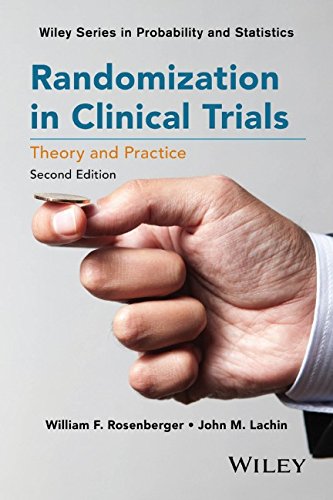
Product details:
ISBN 10:1118742249
ISBN 13:9781118742242
Author:John Lachin,William Rosenberger
Featuring a unique combination of the applied aspects of randomization in clinical trials with a nonparametric approach to inference, Randomization in Clinical Trials: Theory and Practice, Second Edition is the go-to guide for biostatisticians and pharmaceutical industry statisticians.
Randomization in Clinical Trials: Theory and Practice, Second Edition features:
- Discussions on current philosophies, controversies, and new developments in the increasingly important role of randomization techniques in clinical trials
- A new chapter on covariate-adaptive randomization, including minimization techniques and inference
- New developments in restricted randomization and an increased focus on computation of randomization tests as opposed to the asymptotic theory of randomization tests
- Plenty of problem sets, theoretical exercises, and short computer simulations using SAS® to facilitate classroom teaching, simplify the mathematics, and ease readers’ understanding
Randomization in Clinical Trials: Theory and Practice, Second Edition is an excellent reference for researchers as well as applied statisticians and biostatisticians. The Second Edition is also an ideal textbook for upper-undergraduate and graduate-level courses in biostatistics and applied statistics.
William F. Rosenberger, PhD, is University Professor and Chairman of the Department of Statistics at George Mason University. He is a Fellow of the American Statistical Association and the Institute of Mathematical Statistics, and author of over 80 refereed journal articles, as well as The Theory of Response-Adaptive Randomization in Clinical Trials, also published by Wiley.
John M. Lachin, ScD, is Research Professor in the Department of Epidemiology and Biostatistics as well as in the Department of Statistics at The George Washington University. A Fellow of the American Statistical Association and the Society for Clinical Trials, Dr. Lachin is actively involved in coordinating center activities for clinical trials of diabetes. He is the author of Biostatistical Methods: The Assessment of Relative Risks, Second Edition, also published by Wiley.
Randomization in clinical trials theory and practice 2nd Table of contents:
1 Randomization and the Clinical Trial
1.1 Introduction
1.2 Causation and Association
1.3 Randomized Clinical Trials
1.4 Ethics of Randomization
1.5 Problems
1.6 References
2 Issues in the Design f Clinical Trials
2.1 Introduction
2.2 Study Outcomes
2.3 Sources of Bias
2.3.1 Selection and ascertainment bias
2.3.2 Statistical analysis philosophy
2.3.3 Losses to follow-up and noncompliance
3 Randomization for Balancing Treatment Assignments
3.1 Introduction
3.2 Complete Randomization
3.3 Forced Balance Procedures
3.3.1 Random allocation rule
3.3.2 Truncated binomial design
3.3.3 Hadamard randomization
3.3.4 Maximal procedure
3.4 Forced Balance Randomization Within Blocks
3.4.1 Permuted block design
4 The Effects of Unobserved Covariates
4.1 Introduction
4.2 A Bound on the Probability of a Covariate Imbalance
4.3 Simulation Results
4.4 Accidental Bias
4.5 Maximum Eigenvalue of 𝚺T
4.6 Accidental Bias for Biased Coin Designs
4.7 Chronological Bias
4.8 Problems
4.9 References
4.10 Appendix
5 Selection Bias
5.1 Introduction
5.2 The Blackwell–Hodges Model
5.3 Predictability of a Randomization Sequence
5.4 Selection Bias for the Random Allocation Rule and Truncated Binomial Design
6 Randomization as a Basis for Inference
6.1 Introduction
6.2 The Population Model
6.4 Randomization Tests
7 Stratification
7.1 Introduction
7.2 Stratified Randomization
8 Restricted Randomization in Practice
8.1 Introduction
8.2 Stratification
8.3 Characteristics of Randomization Procedures
8.3.1 Consideration of selection bias
8.3.2 Implications for analysis Selecting a Randomization Procedure
8.4.1 Choosing parameter values
8.4.2 Comparing procedures
8.4.3 Conclusions
8.5 Generation of Sequences
8.6 Implementation
8.6.1 Packaging and labeling
8.6.2 The actual randomization
8.7 Special Situations
8.8 Some Examples
8.8.1 The optic neuritis treatment trial
8.8.2 Vesnarinone in congestive heart failure
8.8.3 The diabetes control and complications trial
8.8.4 Captopril in diabetic nephropathy
8.8.5 The diabetes prevention program
8.8.6 Scleral buckling versus primary vitrectomy in retinal detachment (The SPR Study)
8.9 Problems
8.10 References
9 Covariate-Adaptive Randomization
9.1 Early Work
9.1.1 Zelen’s rule
9.1.2 The Pocock–Simon procedure
9.1.3 Example: Adjuvant chemotherapy for locally invasive bladder cancer
9.1.4 Wei’s marginal urn design
9.1.5 Is marginal balance sufficient?
9.1.6 Is randomization necessary?
9.2 More Recent Covariate-Adaptive Randomization Procedures
9.2.1 Balancing within strata
9.2.2 Balancing with respect to continuous covariates
9.3 Optimal Design Based on a Linear Model
9.4 The Trade-Off Among Balance, Efficiency, and Ethics
9.5 Inference for Covariate-Adaptive Randomization
9.5.1 Model-based inference
9.5.2 Randomization-based inference
9.6 Conclusions
9.7 Problems
9.8 References
10 Response-Adaptive Randomization
10.1 Introduction
10.2.1 Roots in bandit problems
10.2.2 Roots in sequential stopping problems
10.2.3 Roots in randomization
10.3 Optimal Allocation
10.4 Response-Adaptive Randomization to Target R∗
10.4.1 Sequential maximum likelihood procedure
10.4.2 Doubly adaptive biased coin design
10.4.3 Example
10.4.4 Efficient randomized-adaptive design
10.5 Urn Models
10.5.1 The generalized Friedman’s urn model
10.5.2 The randomized play-the-winner rule
10.5.3 Designs to target any allocation
10.5.4 Ternary urn models
10.5.5 Klein urn
10.6 Treatment Effect Mappings
10.7 Covariate-Adjusted Response-Adaptive Randomization
10.8 Problems
10.9 References
10.10 Appendix
11 Inference for Response-Adaptive Randomization
11.1 Introduction
11.2 Population-Based Inference
11.2.1 The likelihood
11.2.2 Sufficiency
11.2.3 Bias of the maximum likelihood estimators
11.2.4 Confidence interval procedures
11.3 Power
11.3.1 The relationship between power and the variability of the design
11.3.2 Asymptotically best procedures
11.3.3 Response-adaptive randomization and sequential monitoring
11.4 Randomization-Based Inference
11.5 Problems
11.6 References
12 Response-Adaptive Randomization in Practice
12.1 Basic Assumptions
12.2 Bias, Masking, and Consent
12.3 Logistical Issues
12.4 Selection of A Procedure
12.5 Benefits of Response-Adaptive Randomization
12.6 Some Examples
12.6.1 The extracorporeal membrane oxygenation trial
12.6.2 The fluoxetine trial
12.7 Conclusions
12.8 Problems
12.9 References
People also search for Randomization in clinical trials theory and practice 2nd:
a randomized controlled trial
a randomized clinical interventional trial is a study
pre-randomization clinical trials
dynamic randomization
re-randomization tests in clinical trials
dynamic randomization example
Tags:
John Lachin,William Rosenberger,clinical,Randomization,practice,trials
You may also like…
Medicine - Oncology
Computers - Programming
Politics & Philosophy - Social Sciences
History & Research



